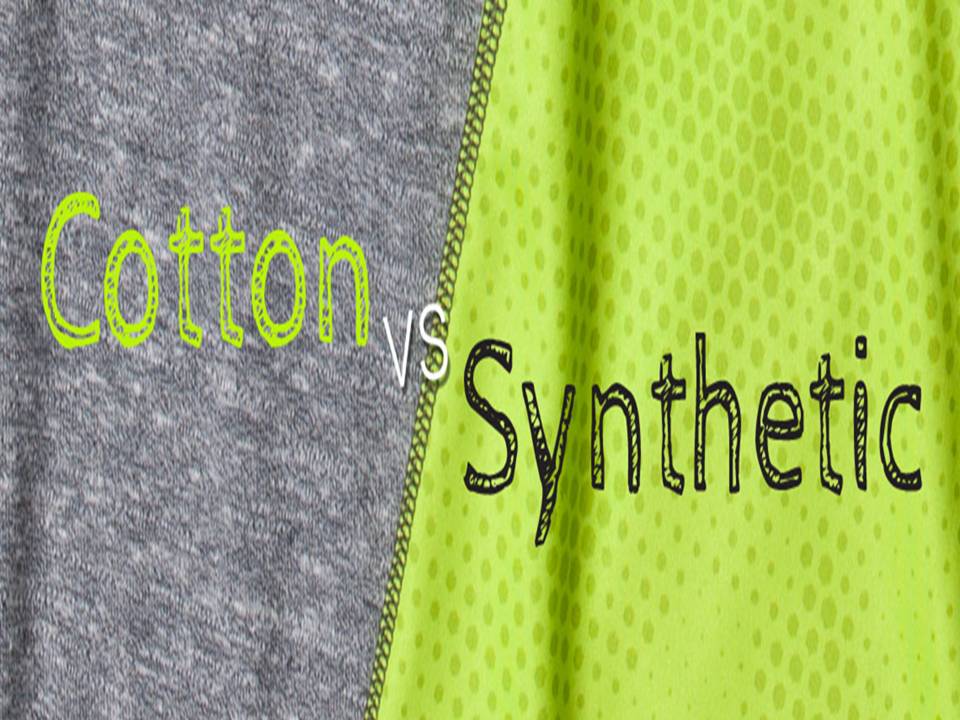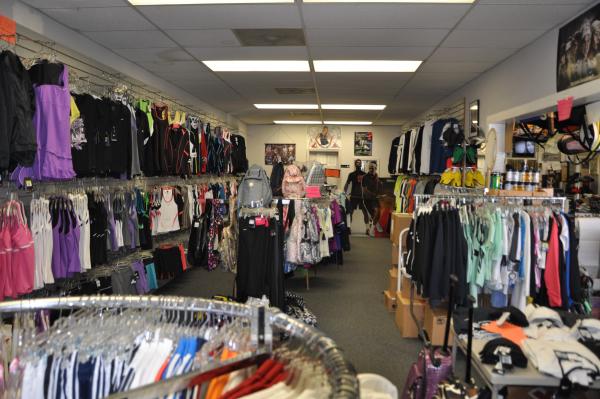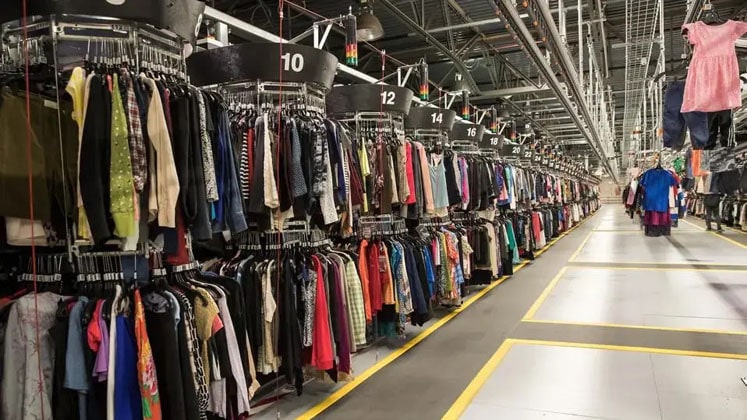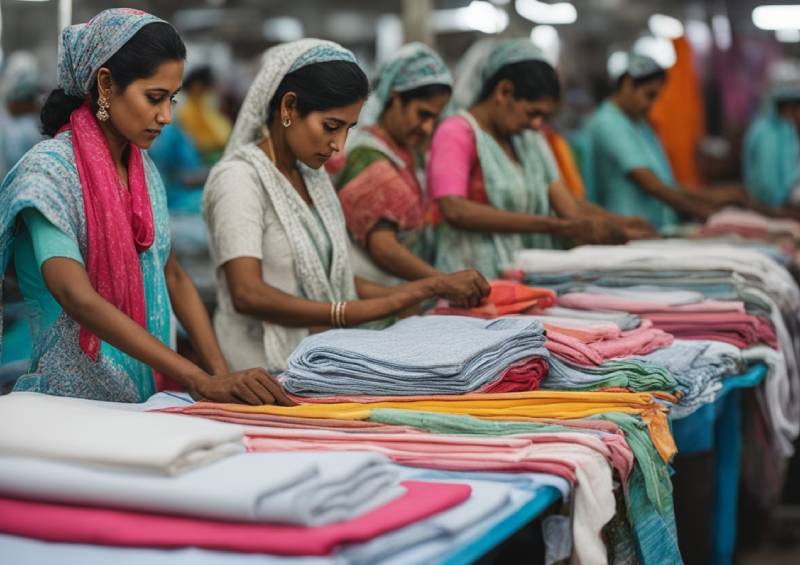FW
African Cotton and Textile Industries Federation has sought government’s assistance in setting up a technology upgrade fund which will enable local cotton millers to transition to new technology. According to Federation's Executive Director, Jaswinder Bedi, such an initiative will help in reducing the high cost of cotton production and the value chain in the Kenyan cotton industry will be more visible as a source of cotton, textile and apparel products for the domestic, regional and international markets.
According to Bedi, revived cotton sector has the capacity to create 500,000 jobs by the end of 2015. Kenya has its own raw material resource coupled with the social and environmental issues around the textile and apparel supply chain. If these issues are tackled in time, Kenya can emerge as the next big investment and sourcing destination having direct access to cotton.
With many global apparel buyers diverting their attention to Africa because of the duty free privileges the United States offers through the African Growth and Opportunity Act (AGOA), Export Processing Zones Authority Managing Director Cyrille Nabutola has assured cotton farmers of the government’s assistance to improve the investment environment including lowering the cost of electricity and marketing Kenya as top sourcing destination for global companies.
Swedish brand Hennes & Mauritz (H&M) launched several sustainability initiatives last year, including its first closed loop collection made with 20 per cent recycled materials from collected garments. Almost all of its stores worldwide participate in its garment collection initiative, first launched in 2012. Last year, the company collected 3,047 tons of unwanted garments. H&M also launched its roadmap for fair living wages. Based on the Fair Wage Network’s methodology, the goal for the roadmap is for all of its strategic suppliers to have improved pay structures to put fair living wages in place by 2018 which will affect around 850,000 workers.
H&M’s 12th sustainability report details all measure it is taking to create sustainable future. The company doubled its share of sustainable cotton in the last two years to 15.8 per cent with 10.8 per cent being certified organic, Better Cotton certified 5.0 per cent, and recycled 0.01 per cent. The goal is for all of its cotton to come from organic cotton, recycled cotton, and Better Cotton certified sources. H&M is already one of the world’s biggest users of certified organic cotton. Sustainable fabrics make up 11 per cent of the fabrics used in H&M’s products, an increase from 9.1 in 2012.
H&M’s goal will increase the share of sustainable fabrics every year. The company is working on reducing the use of solvent based glues in its shoes because they can be harmful to workers. In 2012, H&M produced seven million pairs of shoes with safer water based alternatives. A year later, the company decided to set a goal of phasing out solvent based glues by 2020. It has already achieved a 21 per cent rate for all of its shoes.
H&M has a goal of reducing overall greenhouse gas emissions by 2015. Since electricity use in its stores represents over 70 percent of its GHG emissions, it wants to use only renewable energy sources. In the UK and the Netherlands, H&M has already achieved 100 per cent renewables use. In 2013, 18 per cent of its electricity used worldwide came from renewable sources. The clothing retailer is also focusing on reducing energy use, with a goal of reducing energy use per square meter by 20 percent by 2020. It achieved a 14 per cent reduction in 2013, and that same year, the company installed over 65 per cent of its stores with electricity meters.
H&M wants to make its supply chain more sustainable. For that reason, it signed a pledge in 2011 to not knowingly buy cotton from Uzbekistan because forced child labour is common in Uzbeki cotton fields. In 2013, H&M required all of its suppliers to sign a commitment to not knowingly source any cotton from Uzbekistan. In 2009, the company introduced requirements not to source from any factories located in buildings shared by several companies so the factory can maintain safety control. Two years later, it introduced a training program to increase fire safety awareness among its suppliers and their employees through the use of short films. Through the program, over 300,000 workers and middle managers in Bangladesh have been trained. H&M was the first company to sign the Accord on Fire and Building Safety in Bangladesh in spring 2013; by the end of the year, over 100 brands signed. The Accord is a legally binding agreement created as a result of a factory building collapse in Bangladesh in April 2013 which killed over a 1,000 workers.
www.hm.com
 Cotton is no longer the king of fibres, for synthetic is surging ahead to grab the lead. As per the National Cotton Council, the shift toward synthetic fibers has accelerated. As per their report, cotton began to drift away during the financial crisis in 2008 when retailers were forced to cut costs without raising product prices. Manufacturers adopted synthetic blends that cost less compared to cotton.
Cotton is no longer the king of fibres, for synthetic is surging ahead to grab the lead. As per the National Cotton Council, the shift toward synthetic fibers has accelerated. As per their report, cotton began to drift away during the financial crisis in 2008 when retailers were forced to cut costs without raising product prices. Manufacturers adopted synthetic blends that cost less compared to cotton.
Move from cotton to synthetic
And when cotton prices soared in 2011, clothing manufactures continued using synthetic fibers over cotton. From 2007 to 2013, women’s and girl’s jeans and khakis sales rose 10 per cent to 1.4 billion units sold. The overall cotton content found in the clothing had declined by seven per cent. Industry experts say that in 2014, the US will have more clothing made from synthetic materials than cotton. For instance, the US Department of Agriculture estimates global consumption for cotton to be at 109.2 million bales, a 12 per cent drop from 124 million bales in 2006. Cotton prices have increased from 0.51 cents a pound in 2009 to 0.93 cents a pound in 2013.
The move towards synthetic is also evident with rising number of textile mills  reconfiguring their machinery to run synthetic fibers. The less expensive synthetic blends require less ironing, which also means less cost for consumers. Research report by Euromonitor International US confirms the shift, saying, synthetic clothing has grown by 14 per cent since 2007. Cotton clothing increased in the apparel market by only 2.7 per cent during the same period.
reconfiguring their machinery to run synthetic fibers. The less expensive synthetic blends require less ironing, which also means less cost for consumers. Research report by Euromonitor International US confirms the shift, saying, synthetic clothing has grown by 14 per cent since 2007. Cotton clothing increased in the apparel market by only 2.7 per cent during the same period.
Brands focus goes up on synthetic
Due to the constant rise in cotton fabric prices apparel makers and brands are increasingly weaving synthetic fibers into clothing that was once made up of 100 per cent cotton. The synthetic range is visible in high-end brands to mass-market retailers. For example, jeans from Los Angeles-based seller AG, which specializes in premium denim, are made from cotton, lyocell and polyurethane and cost $168. American Apparel sells a $22 dollar T-shirt that is a blend of polyester, cotton and rayon and a dress from H&M made from rayon and spandex costs $12.95.
This year, US imports of clothing made using synthetic materials are expected to witness a huge growth outpacing cotton apparel for the first time in more than two decades. As recently as 2008, 60 per cent of apparel imports, the vast majority of the US clothing market were made of cotton. But consumers as well as brand already seem to have made a shift.
For example, Under Armour became a $2.9 billion, a year business selling athletic gear made with synthetics including polyester, the oil-based fabric once associated with leisure suits and golf pants. Under Armour began as a supplier of moisture-wicking T-shirts to sports teams. Now, it sells a range of apparel, offering women's pants in fabrics that are a mix of nylon and spandex and fleece hoodies containing polyester. And at Lululemon, some tops and bottoms are manufactured using a technology that reduces stink during work out. Growth of synthetic fibers has been a recent phenomenon of last five years. As consumers got used to wearing polyester and spandex, basic apparel makers like Hanes Brands introduced blended man-made fibers into all-cotton products, such as underwear.
With high cotton prices negatively affecting the product prices, industry experts feel that it is less likely that retailers will return to the natural fiber. And since most of the consumers first look at the prices than the fabric used to create a particular product, synthetic seems to be a way forward.
China Hosiery Purchasing Expo show-CHPE a show for high end hosiery products like socks, tights etc, last month, was full of optimism inspite of the challenges China is facing in export business. Exhibitors and visitors felt China is facing a number of challenges at the moment and as a result becoming more expensive. Wages have gone up leading to a shift in manufacturing to other countries. Emphasizing on this, Ahsan Ghazanfar-Dynamic Sportswear (socks manufacturer) from Pakistan says, “We have to make use of this opportunity. So we have to become more aggressive in marketing.”
As far as the business environment is concerned, the market is witnessing growth in different countries. Although the economic situation is not so good still the business mood is positive. Organizations are pinning their hope on 2014 for better growth. Sharing this optimism, Ghazanfar sats, “The buying power in Europe and US has gone down. Cost of production in India, Pakistan and Bangladesh is rising. We have to be more competitive on price points.” On the other hand the business environment in China is getting better and better in the domestic market but the same cannot be said for Russia. Richard Wang, Invista-China office hopes to maintain business. “People who are not focused will have a difficult time. The focused ones will be the clear winners. In a country like China which has many opportunities it’s easy to lose focus.”
Talking about the business perspective, Wang, said, “The global economy is good. Business is not a problem since everyone needs clothes. The question is how you meet the customers’ needs. You need to do innovation and pay attention to details.” Invista is focusing on promoting fusion Lycra fibre. It’s a new product and has been in the market for around three years. “It can improve the durability of hosiery and India will soon hear of it,” says Wang.
Textile exporters in Pakistan say they have been receiving notices from the Federal Board of Revenue (FBR) to settle dues against sales tax refund. These outstanding dues have been calculated on the basis of a new policy of not allowing refund on trade with blacklisted firms. The policy, however, has been implemented with retrospective effect.
Consequently, earlier sales tax adjustment cases were reviewed and outstanding dues worked out against exporters who received refunds over the past two years. Exporters say they have been issued notices demanding tax recovery on account of refunds received against supplies of blacklisted suppliers but that at the time of dealing suppliers were not blacklisted. They insist they have been pressing for quick settlement of pending refund claims, but didn’t expect the FBR to trap them instead with reverse claims. Apparently about 30 to 35 per cent of the working capital of exporters is stuck up with sales tax, customs rebate and federal excise duty refund regimes.
The FBR says bank managers are being coerced to transfer funds to the treasury from the accounts of exporters in the name of recovery and that it was the duty of the FBR to retrieve public money if obtained illegally.
www.fbr.gov.pk/
Korean textile companies set base in Guatemala due to its geographical proximity to the US market and cheap labor. But now these companies are facing problems of higher wages, scrapping of tax benefits and a fall in demand for garments in the United States. Apart from these, corporate tax benefits now available for foreign businesses will be disappearing from next year.
Korean textile companies account for 45 per cent of the industry in the Central American country. Nearly 60 per cent of garment products in Guatemala are sold in the US market. In 2012, garment products reportedly account for 11.7 per cent of the entire exports of the country, followed by coffee (9.5 per cent) and sugarcane (7.9 per cent).
The textile industry has created nearly 90,000 jobs in his country. One Korean company alone created 7,000 jobs. These businesses are operated by Korean emigrants who migrated to Guatemala in the 1980s when a textile boom was created. Over 8,000 Koreans are now living in Guatemala.
But now, feeling the pressure, some Korean companies are mulling relocating their factories to neighboring countries, such as Nicaragua and Haiti, in search of a better business environment.
The government of Guatemala insists it is doing its utmost to retain business, and attract more investment, by creating new incentives for foreign investors, like Korean businesses.
Bangladesh wants the US to reduce discriminatory duty on shipments of garment items so as to make Bangladeshi products more competitive in the American market. The duty structure for Bangladeshi products can be seen as discriminatory as other competing countries pay much less tariff on exports to the US. Bangladesh as a least developed country and is supposed to enjoy zero-tariff benefit from the American market but actually pays the second highest duty for exports to the US.
Vietnam pays 8.38 per cent tax, Indonesia pays 6.36 per cent, China 3 per cent, Germany 1.16 per cent, India 2.29 per cent, Turkey 3.57 per cent and Hong Kong 1.25 per cent on export of goods to the US market. The average duty Bangladesh pays the US is more than 16 per cent and the tariff on garment products is 15.62 per cent. Of the yearly export of Bangladeshi products to the US market, 95 per cent are garment items.
Before the US scrapped Bangladesh's GSP (Generalised System of Preferences) privileges, the country enjoyed duty-free access for 97 per cent of its export items. Bangladesh paid $828 million in taxes to the US customs last year and $3.38 billion over the last five years since 2009.
Workers at some garment and footwear units in Cambodia’s Special Economic Zones have gone on strike. Factories have been stoned, workers threatened and property destroyed.
Now garment manufacturers in Cambodia have urged the government to take action. They fear the strikes will spread to other industrial zones if there are no preventive measures. They have appealed to the Ministry of Labor and local authorities to implement their roles in curbing these strikes immediately in order to ensure security and safety for investors and workers who wish to work.
Thousands of garment and footwear workers at three Special Economic Zones in Bavet City had staged strikes about a week back to demand the $50 US that they claimed that factory owners had promised to give them when they did not join a post-New Year strike, which was organized by eight opposition-aligned trade unions in mid-April.
However, garment manufacturers have denied making such a promise and accused the opposition-aligned trade unions of fabricating this information after they failed to attract workers for their post- New Year strike. Wage disputes in Cambodia’s garment sector rage furiously. The garment and footwear industry, the kingdom's largest foreign exchange earner, comprises 960 factories with about 6,20, 000 workers. The sector earned $5.5 billion in revenues last year.
APLF's Materials, Manufacturing and Technology (MM&T) show was held March 31 to April 2, 2014, Hong Kong Convention and Exhibition Centre. MM&T is the meeting place for the global leather industry. This was the show’s 30th anniversary. Exhibitors from 50 countries and regions showcased their products. Exhibitors were from countries like Argentina, Brazil, China, Germany, Hong Kong, India, Italy, Japan, Korea, Mexico, Pakistan, Taiwan, Thailand, Turkey, UK and US.
More than 8,000 buyers from outside China and Hong Kong visited the fair this year, representing an impressive increase of 8.73 per cent in comparison to last year. Brazil was the focus at MM&T this year and 38 Brazilian companies exhibited at the fair. Representatives from Brazil presented several seminars at the Leather Forum on subjects such as traceability, environment and sustainability.
The Council for Leather Exports (CLE) from India participated and showcased products from 57 Indian companies. A wide range of finished leather, leather garments, fashion accessories and small leather goods were on display. The next edition of Materials, Manufacturing and Technology will take place on March 30 to April 1, 2015, same venue.
APLF is based in Hong Kong. It provides global companies a chance to trade and exchange information at a number of trade fairs. It organises a number of trade exhibitions which focus on fashion and lifestyle. These include Materials Manufacturing and Technology, All China Leather Exhibition, China International Footwear Fair and Moda Shanghai.
www.aplf.com/
Cintas Corporation has introduced its new AR Red Suiting collection made with DuPont Sorona renewably sourced fiber. The fabric reduces carbon dioxide emissions used in the manufacturing process by as much as 63 per cent. The collection was created in collaboration with Austin Reed and consists of options for both men and women.
Cintas’ partnership with Austin Reed has resulted in environmentally friendly and fashionable garments that blend functionality, comfort and innovation. Cintas is committed to identifying sustainable options that lessen the impact of its manufacturing processes.
Sorona is an eco-friendly, plant-based fiber made with renewable, naturally occurring starch. Garments made with Sorona are soft, strong and dry quickly. Sorona also helps fabrics stretch comfortably, stay wrinkle-free and retain their shape. Garments in the AR Red Suiting collection include blazers, slacks and skirts for women and blazers and pants for men. In order to keep wearers cool and comfortable, the blazers are fully lined with breathable Aerocool technology and feature multiple inside pockets for added functionality. The collection is offered in a full range of sizes, including petite.
Cintas designs, manufactures and implements corporate identity uniform programs, and provides entrance mats, restroom cleaning and supplies, tile and carpet cleaning, promotional products, first aid, safety, fire protection products and services and document management services.
www.cintas.com/












